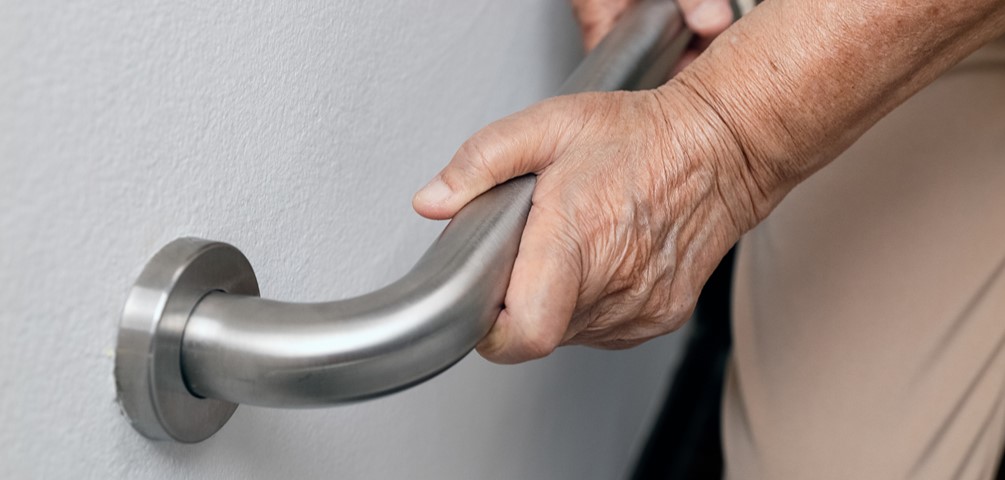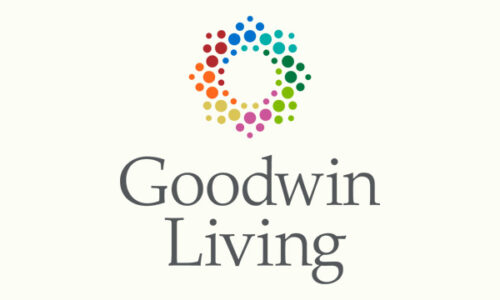5 Fall Hazards You Should Know
Goodwin Living Promotes Fall Prevention
by Timaeus Reed
A simple fall can cause drastic changes in our lives. According to the CDC, one in five falls leads to serious injury, and more than 3 million older adults are treated for fall injuries yearly. Though not all these injuries can be avoided, it’s possible to significantly reduce the risks with the proper support and education.
In the past, we’ve offered evergreen tips on fall prevention for people of all ages. Yet, there’s always more we can learn when it comes to safety. Who better to teach us than one of the Good Living team members who specializes in fall preventions.
We asked Goodwin Home Health Occupational Therapist Jennifer Cooper to shed light on her important work, the most common fall hazards in her experience and how to possibly correct them.
You have a Fall Prevention Certificate. How did you acquire it, and how does it tie into your work?
I have earned a fall prevention certification and a certified aging-in-place specialist (CAPS) designation. Both required extensive online classes, examinations and ongoing continuing education to maintain the designation. I’m very interested in helping older adults age in their own homes, and these designations dovetail perfectly into my role as an occupational therapist working in home health.
While treating clients in their homes, I thoroughly assess their lifestyle habits, home setup, functional ability, safety and fall risk. I utilize fall prevention strategies and make home modification recommendations to allow them to age safely in their homes. If the client implements my suggestions, I assist with setting things up and training the client and their family or caregivers. My goal is to help people learn new strategies to maximize their safety and independence in their living environment.
How does occupational therapy differ from other types of therapy?
Occupational therapy has an essential and unique role in the world of rehabilitation. While physical therapy may focus on movement, strength, and balance, occupational therapy focuses on function. As we develop treatment plans, we consider the relationship between the activities important to the client and the environment in which they live and work. We are experts at analyzing tasks and implementing strategies that allow clients to engage in these activities while maximizing their safety and independence.
Occupational therapy and physical therapy work closely together and complement each other. For example, physical therapy may work to strengthen a client’s legs and improve their balance so they can transition from sitting to standing. Meanwhile, occupational therapy works on functional tasks that require these skills; we want to be sure that the client can safely transfer to the bed or toilet without falling. We also use adaptive devices and provide education and training on safety, sequencing, body mechanics and energy conservation. Sometimes adapting the way we perform daily functional activities can renew our independence.
In your experience, what are the five hazards most likely to cause a fall, especially for older adults? How might someone correct or avoid these hazards?
Uneven Carpet and Unsecured Rugs
Removing scatter rugs or securing the rug’s edges to the floor helps minimize tripping or catching a walker leg on the edge. If someone’s carpeting is not smooth and secure, they should consider replacing it or stretching it to even the walking area. People should also consider bathmats with non-skid backing to prevent slipping when getting out of the bath or shower.
Narrow Walking Space and Clutter
Narrow walking paths and excess clutter make it difficult to move safely in the home, with or without an assistive device. Make pathways wide and clear, especially in hallways and bathrooms, or remove excess furniture in bedrooms and living areas.
Lighting
Extremely bright or dim lighting can lead to falls. If it’s too bright, glare can be an issue. If it’s too dark, navigation becomes difficult. This is especially important with low vision issues that are common with aging. Consider automatic lighting with timers, nightlights or motion-activated lighting to use around the home. Make sure the light switch at the entrance to a room turns on a light before you enter. Incorporate window treatments that can decrease glare. Watch out for kitchen lighting that may cause shadows that distort perception and undercabinet lighting that can cause glare on countertops.
Furniture Height
Consider the height of the furniture used regularly. Furniture that is too low requires more muscle control to gently lower into. Furniture that is too high (we often see this with beds and toilets) can also increase the risks of falling. Consider different furniture, lowering the bed height or using a bed rail for support.
Pets
Both cats and dogs can run in front or behind you, and walking animals without proper control of the pet and attention to surroundings can cause a fall. Even bending over to feed pets, clean litter boxes and pick up toys can cause a fall. Always clear walking areas of toys and clutter. Be aware of your surroundings when walking pets. For example, keep an eye out for other dogs, squirrels or people that may cause the pet to run toward them. Move food and water bowls to a higher position or use adaptive devices to pick up the bowls. Raising the height of the litter box can limit the need for bending over and decrease fall risk.
There are many other important areas to address in the home to ensure safety and minimize the risk of falls. Occupational therapists are experts in these areas and can provide practical solutions to areas of concern.
Goodwin Living Promotes Home Health and Therapy Services in Loudon
We appreciate Jennifer and other highly qualified and capable therapists like her on our team for the vital work they do. To expand the ways and places we can provide services like hers to those in need, Goodwin Home Health has gone the extra mile to partner with community organizations. Recently, Goodwin Home Health Director of Community Based Growth Tony Hughes and his team brought our services to Loudon in partnership with APAH, a nonprofit committed to connecting underserved people in the region with affordable housing.
With this exciting new partnership, residents of Loudon View will receive exercise and educational classes about home health. At the partnership launch event, residents met Goodwin Home Health team members with a warm welcome as they passed out helpful information about our services and nightlights to combat fall prevention.
Our growing relationship with APAH is one of the many ways Goodwin Living strives to do its part to support, honor and uplift older adults. If you are interested in any of our world-class healthcare services, follow this link to learn more. Stay safe!





